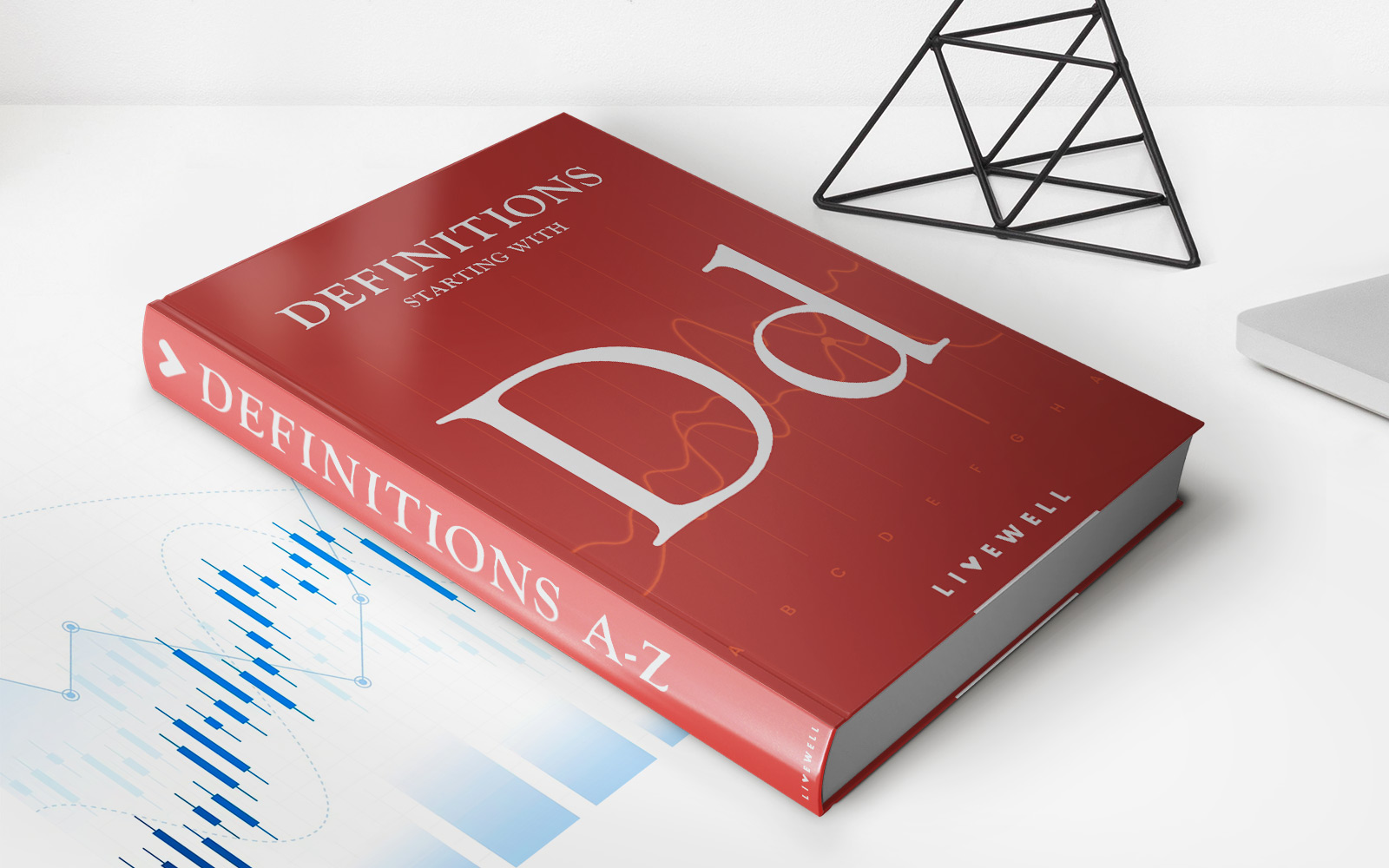Home>Finance>How Does A Changing Capital Structure Can Impact Beta And Risk And Improve ROE


Finance
How Does A Changing Capital Structure Can Impact Beta And Risk And Improve ROE
Modified: December 30, 2023
Discover how a changing capital structure in finance impacts beta, risk, and ultimately improves return on equity (ROE)
(Many of the links in this article redirect to a specific reviewed product. Your purchase of these products through affiliate links helps to generate commission for LiveWell, at no extra cost. Learn more)
Table of Contents
Introduction
Welcome to the world of finance, where the concept of capital structure plays a pivotal role in determining the financial health and risk profile of a company. Capital structure refers to the way a company finances its operations through a combination of debt and equity. The decisions regarding the capital structure can have a profound impact on various financial metrics, including beta, risk, and return on equity (ROE).
Understanding the relationship between the capital structure and these financial indicators is crucial for investors, financial analysts, and decision-makers. By analyzing the effects of changing capital structure on beta, risk, and ROE, stakeholders can make informed investment decisions and take strategic actions to improve the performance of a company.
Before delving into the intricacies of capital structure, it is important to define some key terms. Beta measures the systematic risk of a stock or portfolio, indicating its sensitivity to overall market movements. High beta values imply greater volatility and risk, while low beta values suggest more stability. Risk, on the other hand, encompasses the possibility of financial loss or uncertainty in achieving desired outcomes.
In the following sections, we will explore the relationship between capital structure, beta, risk, and ROE. We will examine how changing the capital structure can impact these factors and, ultimately, the financial performance of a company. By the end, you will have a comprehensive understanding of the significance of capital structure in finance and its implications for investors and businesses alike.
Definition of Capital Structure
Capital structure refers to the way a company finances its operations and investments by utilizing a mix of debt and equity. In simpler terms, it represents the composition of a company’s liabilities and equity. The two main components of capital structure are debt and equity. Debt refers to borrowed funds that the company owes to creditors, while equity represents the ownership interest of shareholders in the company.
Companies have the flexibility to choose their capital structure based on their financial needs and objectives. The proportion of debt and equity in the capital structure can vary from company to company, depending on factors such as industry norms, company size, growth prospects, and risk appetite. A capital structure with a higher proportion of debt is known as a high leverage or more debt-driven capital structure, while a capital structure with a larger proportion of equity is considered a low leverage or more equity-dependent capital structure.
It is important to note that capital structure decisions can have significant implications for a company’s financial health, risk profile, and cost of capital. Finding the right balance between debt and equity is crucial for optimizing a company’s capital structure and achieving optimal financial outcomes.
There are several key financial metrics and ratios used to analyze and evaluate a company’s capital structure:
- Debt-to-equity ratio: This ratio compares a company’s total debt to its total equity and indicates the level of debt financing relative to equity financing. A higher ratio suggests that the company relies more on debt to finance its operations.
- Equity ratio: This ratio represents the proportion of a company’s total assets that are financed by equity. It is calculated by dividing total equity by total assets. A higher equity ratio indicates a lower reliance on debt financing.
- Interest coverage ratio: This ratio measures a company’s ability to pay interest expenses on its outstanding debt. It is calculated by dividing earnings before interest and taxes (EBIT) by interest expenses. A higher ratio signifies a better ability to cover interest obligations.
By analyzing these metrics and ratios, investors and financial analysts can assess the financial risk, stability, and efficiency of a company’s capital structure. This information can help them make informed investment decisions and understand the potential implications of any changes in the capital structure.
Understanding Beta and Risk
Before diving into the relationship between capital structure and beta, risk, and return on equity (ROE), let’s first grasp the concept of beta and its significance in evaluating investment risk.
Beta is a measure of a stock or portfolio’s sensitivity to market movements. It quantifies the systematic risk associated with an investment. Beta is usually calculated by comparing the historical price movements of a specific stock or portfolio to the overall market movements, usually represented by a benchmark index such as the S&P 500. A beta of 1 indicates that the stock tends to move in line with the market, whereas a beta greater than 1 implies higher volatility and a more significant reaction to overall market fluctuations. Conversely, a beta below 1 suggests that the stock is less volatile and exhibits a lower degree of sensitivity to market movements.
Risk, in the context of investing, refers to the uncertainty or potential for financial loss associated with an investment. It encompasses various factors, including market risk, interest rate risk, industry risk, and company-specific risk. Investors and financial analysts use risk measures, such as beta, to assess the potential for a particular investment to generate returns and determine the appropriate level of risk to take on.
Understanding and evaluating risk is crucial for investors as it helps them make informed investment decisions and manage their portfolios effectively. By examining a stock’s beta, investors can assess its volatility and determine whether it aligns with their risk tolerance and investment objectives. High beta stocks typically offer the potential for higher returns but also carry higher risks, while low beta stocks are generally considered safer but may yield lower returns.
It is important to note that beta is not the only measure of risk, and there are other factors to consider when assessing investment risk. These factors include company-specific factors such as financial health, competitive position, and management quality, as well as broader economic and industry factors.
In the next sections, we will explore how changes in a company’s capital structure can impact beta, risk, and ultimately, its financial performance. Understanding this relationship is crucial for investors and decision-makers seeking to optimize their investment strategies and manage risk effectively.
Capital Structure and Beta
The capital structure of a company can have a significant impact on its beta, which measures the sensitivity of a stock’s returns to overall market movements. Let’s explore how the composition of a company’s capital structure can influence its beta.
When a company uses more debt in its capital structure, it increases the financial leverage. Higher financial leverage can amplify the impact of market fluctuations on a company’s earnings and stock price. As a result, a company with a higher proportion of debt in its capital structure tends to exhibit a higher beta. This is because the company’s financial performance becomes more susceptible to changes in the overall market conditions due to the higher financial risk associated with debt repayment obligations.
Conversely, a company with a lower proportion of debt and a higher proportion of equity financing tends to have a lower beta. Equity financing provides a cushion against financial risk as equity investors bear the brunt of market downturns, leaving the company’s financial position relatively stable. Consequently, companies with a more equity-dependent capital structure have lower beta values and are considered less volatile.
It is worth noting that the impact of capital structure on beta can also vary across different industries. Industries that are more cyclical or have higher operating leverage, such as technology or manufacturing, tend to have higher beta values. On the other hand, industries that are less cyclical or have lower operating leverage, such as utilities or consumer staples, often exhibit lower beta values.
Investors and financial analysts commonly use beta as a tool to assess the risk-return trade-off of an investment. A high beta stock offers the potential for higher returns but also greater risk, while a low beta stock is considered less risky but may yield lower returns. By understanding how a company’s capital structure affects its beta, investors can evaluate the risk associated with their investments and make informed decisions to align their portfolios with their risk tolerance.
In summary, the capital structure of a company plays a vital role in determining its beta. A higher proportion of debt in the capital structure leads to a higher beta, indicating greater exposure to market fluctuations and higher volatility in returns. Conversely, a lower proportion of debt and a higher proportion of equity financing result in a lower beta, reflecting reduced sensitivity to market movements and lower volatility. By analyzing the impact of capital structure on beta, investors can assess the risk profile of a company and make informed decisions that align with their investment objectives.
Capital Structure and Risk
Capital structure plays a crucial role in determining the risk profile of a company. The composition of a company’s capital structure can significantly impact its overall financial risk. Let’s delve into how different capital structures can influence the risk associated with a company.
A company with a higher proportion of debt in its capital structure tends to have higher financial risk. This is because debt comes with fixed interest obligations and repayment requirements. If a company faces financial difficulties or a downturn in its business, it may struggle to meet its debt obligations, leading to the possibility of default or bankruptcy. The higher the debt burden, the riskier the financial position of the company becomes. Moreover, taking on excessive debt increases the company’s interest expenses, which can further strain its cash flow and profitability.
On the other hand, a company with a lower proportion of debt and a higher proportion of equity financing generally has lower financial risk. Equity financing does not require periodic interest payments or fixed repayment obligations. Instead, equity investors bear the risk of the company’s financial performance. This provides a cushioning effect and reduces the probability of financial distress caused by debt repayment challenges.
In addition to financial risk, different capital structures can also impact other types of risk, such as operational risk and business risk. Operational risk refers to the risk of disruptions or inefficiencies in a company’s day-to-day operations, while business risk relates to factors specific to the industry or market in which the company operates.
A high debt burden can increase operational risk as a company may need to allocate a significant portion of its cash flow towards interest payments rather than reinvesting in the business or addressing operational needs. This can hinder the company’s ability to adapt to market changes or invest in growth opportunities, thus exposing it to greater operational risk.
Furthermore, a high debt-to-equity ratio can amplify business risk. In times of economic downturns or industry-specific challenges, highly leveraged companies may face difficulties in generating sufficient cash flow to support their operations. This can lead to a higher probability of business failure, especially if the company is unable to service its debt obligations.
It is important to note that while a lower debt-to-equity ratio decreases financial, operational, and business risk, it does not eliminate risk entirely. Other factors, such as industry dynamics, market conditions, competitive pressures, and management decisions, also contribute to the overall risk profile of a company.
Understanding the impact of capital structure on risk allows investors and decision-makers to assess the risk-return trade-off and make informed choices. By analyzing the risk implications of different capital structures, stakeholders can optimize the company’s risk profile, align it with their risk appetite, and make strategic decisions to mitigate risk and enhance overall financial performance.
Impact of Changing Capital Structure on Beta
Changing a company’s capital structure can have a significant impact on its beta, which measures the sensitivity of a stock’s returns to market movements. Let’s explore how altering the composition of a company’s capital structure can influence its beta.
Increasing the proportion of debt in a company’s capital structure can raise its beta. This happens because higher financial leverage amplifies the impact of market fluctuations on the company’s earnings and stock price. A higher debt burden increases the company’s financial risk and makes it more vulnerable to changes in market conditions. Consequently, the company’s beta tends to rise, reflecting its increased sensitivity to overall market movements.
Conversely, reducing the proportion of debt and increasing equity financing can lead to a lower beta. With a lower debt burden, the financial risk is reduced and the company becomes less susceptible to market volatility. This results in a lower beta, indicating a lower degree of sensitivity to market movements. A lower beta signifies a more stable stock price that is less influenced by market fluctuations.
It is essential to note that changing an established capital structure requires careful consideration of factors such as the cost of debt, investor sentiment, and the impact on the company’s overall financial health. While manipulating the capital structure may help in rebalancing risk, it can also have implications on other financial aspects such as interest expenses, credit ratings, and borrowing costs.
Additionally, the impact of changing capital structure on beta can vary across industries. Industries with higher operating leverage, such as manufacturing or technology, may experience a more significant change in beta when altering the capital structure. Conversely, industries with lower operating leverage, such as utilities or consumer staples, may see a relatively smaller impact on beta.
Understanding the relationship between changing capital structure and beta is essential for investors and decision-makers. By analyzing the potential impact on beta, stakeholders can assess the risk-reward trade-off, evaluate the company’s exposure to market movements, and make informed decisions regarding capital structure adjustments.
It is important to remember that beta is just one of many factors to consider when making investment decisions. Other factors such as industry dynamics, the company’s competitive position, management quality, and overall market conditions should also be evaluated in conjunction with the impact of changing capital structure on beta.
In summary, altering the capital structure of a company can have a direct impact on its beta. Increasing debt increases beta, signifying higher sensitivity to market movements and increased volatility. Conversely, decreasing debt and increasing equity financing can lower beta, indicating lower sensitivity to market fluctuations and reduced volatility. Careful consideration and evaluation of the potential impact on beta are crucial when contemplating changes to a company’s capital structure.
Impact of Changing Capital Structure on Risk
Changing the capital structure of a company can have a profound impact on its overall risk profile. Let’s explore how modifications to the composition of a company’s capital structure can influence its level of risk.
Increasing the proportion of debt in a company’s capital structure can elevate its financial risk. Higher debt levels necessitate regular interest payments and principal repayments. If a company experiences financial difficulties or economic downturns, it may struggle to meet these obligations, leading to a higher risk of default or bankruptcy. Consequently, a higher debt burden raises the financial risk associated with the company.
Conversely, reducing the proportion of debt and increasing equity financing can result in lower financial risk. Equity financing does not have fixed interest payments or repayment obligations, thereby reducing the risk of financial distress caused by debt repayment challenges. By relying more on equity, a company can cushion itself against financial turmoil, making it less vulnerable to default risks.
In addition to financial risk, changes in capital structure can impact other types of risk as well. Operational risk refers to the potential disruptions or inefficiencies in a company’s day-to-day operations, while business risk relates to industry-specific factors that can affect the company’s performance.
A high debt burden can increase operational risk as the company might need to allocate a significant portion of its cash flow towards interest payments, limiting its ability to reinvest in the business or address operational needs. This may hinder the company’s agility in responding to market changes or investing in growth opportunities, thereby exposing it to greater operational risk.
Furthermore, a high debt-to-equity ratio can amplify business risk. Higher debt levels increase the company’s fixed financial obligations, making it more vulnerable to economic downturns or industry-specific challenges. Reduced financial flexibility can hinder the company’s ability to generate sufficient cash flow to support its operations during challenging times, thereby increasing the risk of business failure.
It is important to note that while reducing the debt-to-equity ratio can lower financial, operational, and business risk, it does not eliminate risk entirely. Other factors, including industry dynamics, competitive pressures, market conditions, and management decisions, also contribute to the overall risk profile of a company.
Understanding the impact of changing capital structure on risk is crucial for investors and decision-makers. By evaluating the potential impact on risk, stakeholders can make informed decisions, optimize the company’s risk profile, and align it with their risk appetite and strategic objectives.
It is worth mentioning that any decision to alter the capital structure should be made after careful consideration of various factors, including the cost of debt, investor expectations, and the overall financial health of the company. Balancing risk and return considerations, along with maintaining a sustainable capital structure, is key to long-term financial success.
In summary, changing the capital structure of a company can significantly impact its risk profile. Increasing the debt component raises financial risk, while reducing debt and increasing equity financing can lower it. Changes in capital structure can also influence operational and business risks. Understanding the impact of capital structure on risk empowers stakeholders to make informed decisions that align with their risk tolerance and strategic goals.
Improving Return on Equity (ROE) through Changing Capital Structure
Return on Equity (ROE) is a key financial metric that measures the profitability and efficiency of a company in generating returns for its shareholders. Changing the capital structure of a company can have implications for its ROE. Let’s delve into how altering the composition of a company’s capital structure can potentially improve its ROE.
ROE is calculated by dividing the net income of a company by its shareholder’s equity. It represents the percentage of profit generated for each dollar of equity invested. A higher ROE indicates that a company is generating more profits from its shareholders’ investments, reflecting greater efficiency and value creation.
Increasing the proportion of debt in the capital structure can have a positive impact on ROE. The use of debt can magnify the returns generated from equity investments. As debt is cheaper than equity financing due to tax advantages and lower cost of capital, it allows companies to leverage their operations and allocate a smaller portion of the profits to equity investors. This can result in higher returns on equity, thus boosting the company’s ROE.
However, while increased debt can enhance ROE, it also introduces higher financial risk. The company needs to carefully manage its debt obligations to avoid any potential negative consequences, such as a default on debt payments or a decrease in creditworthiness. Therefore, finding the appropriate balance between debt and equity is crucial to ensure that the benefits of increased ROE outweigh the associated risks.
Conversely, reducing the proportion of debt and increasing equity financing can also impact ROE but in a different manner. While this may lead to a decrease in ROE initially due to the dilution of equity, it can create a more stable and sustainable financial structure in the long term. By relying less on debt, the company can reduce its financial risk, improve its creditworthiness, and enhance its long-term profitability and stability. A stronger financial position can attract more investors and provide the company with better opportunities for growth, ultimately contributing to improved ROE over time.
It is important to note that the impact of changing capital structure on ROE can vary based on factors such as industry dynamics, market conditions, and the overall financial health of the company. Additionally, other factors such as operating efficiency, effective cost management, and revenue growth also contribute to the overall improvement in ROE.
When considering changes to the capital structure, it is essential for companies to carefully evaluate the potential impact on their ROE and weigh it against other factors related to risk, financial health, and long-term sustainability. Striking a balance between debt and equity financing that aligns with the company’s strategic goals and risk appetite can lead to optimal ROE and long-term shareholder value.
In summary, changing the capital structure of a company can have implications for its ROE. Increasing debt can potentially boost ROE in the short term but comes with higher financial risk. On the other hand, reducing debt and increasing equity can lead to a more sustainable financial structure and create opportunities for long-term improvement in ROE. Companies need to carefully analyze their specific circumstances and goals when considering changes to their capital structure to ensure optimal financial performance and value creation for shareholders.
Conclusion
Understanding the relationship between capital structure and financial metrics such as beta, risk, and return on equity (ROE) is fundamental for investors, financial analysts, and decision-makers. Throughout this article, we have explored the impact of changing capital structure on these important aspects of a company’s financial performance.
Capital structure, which represents the mix of debt and equity financing used by a company, can significantly influence its beta and risk. A higher proportion of debt in the capital structure tends to result in a higher beta and increased financial risk. Conversely, a larger proportion of equity financing lowers beta and reduces financial risk by providing a cushion against market fluctuations and financial distress.
Furthermore, changing capital structure can have implications for return on equity (ROE). Increasing the debt component can magnify returns on equity investments, potentially leading to higher ROE. However, it also introduces higher financial risk that needs to be carefully managed. Alternatively, reducing debt and increasing equity financing can contribute to a more stable and sustainable financial structure, ultimately improving ROE in the long run.
It is important to note that altering the capital structure should be approached with caution, considering factors such as industry dynamics, market conditions, and the overall financial health of the company. Striking the right balance between debt and equity to optimize risk and return is crucial for long-term success.
In conclusion, the capital structure of a company plays a vital role in shaping its financial performance and risk profile. By understanding the impact of changing capital structure on beta, risk, and ROE, investors and decision-makers can make informed choices to achieve desired financial outcomes. Evaluating the trade-offs, considering specific industry factors, and aiming for a sustainable capital structure are key in maximizing the potential benefits and minimizing the associated risks.
Overall, capital structure is an essential aspect of financial management that requires careful consideration and evaluation. By analyzing and adapting the capital structure to align with the company’s goals and risk tolerance, stakeholders can enhance the overall financial health, optimize risk-return trade-offs, and create long-term value for shareholders.














